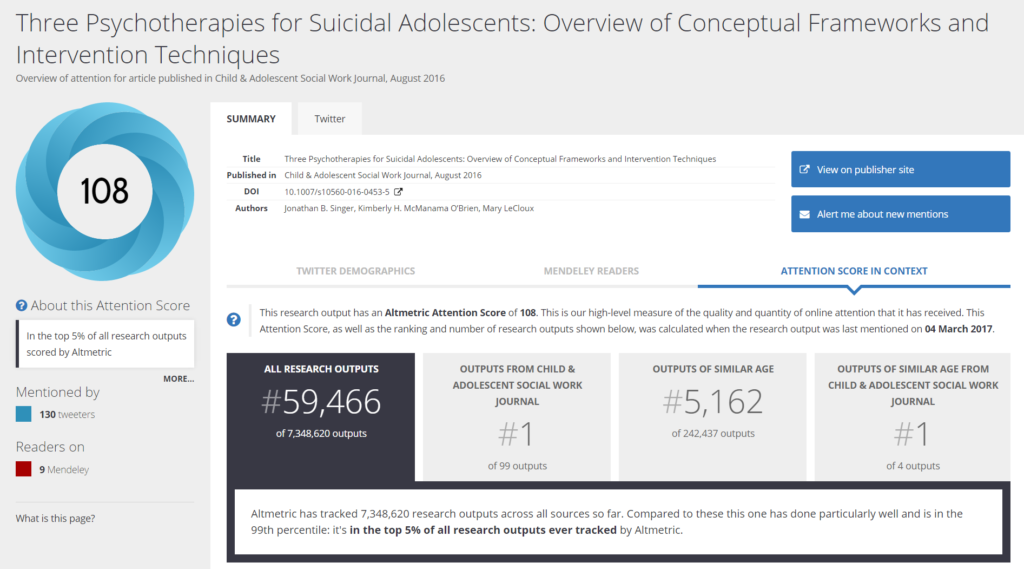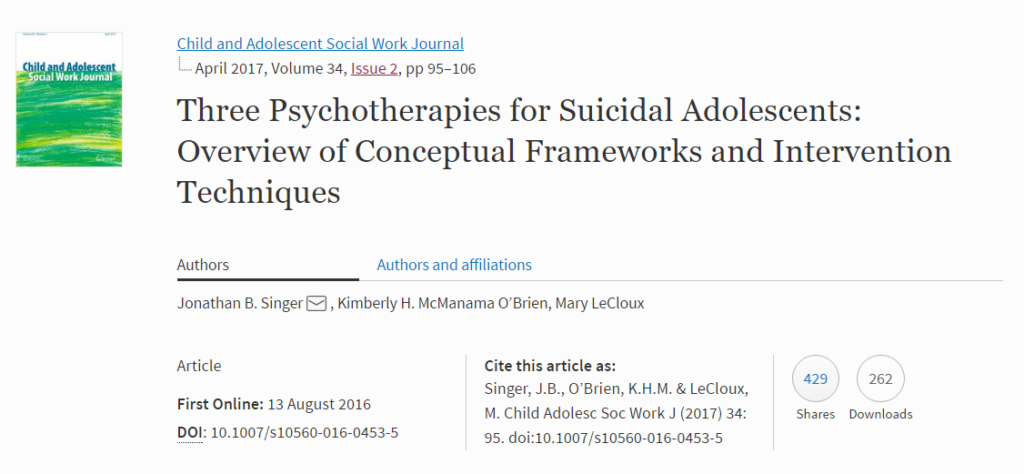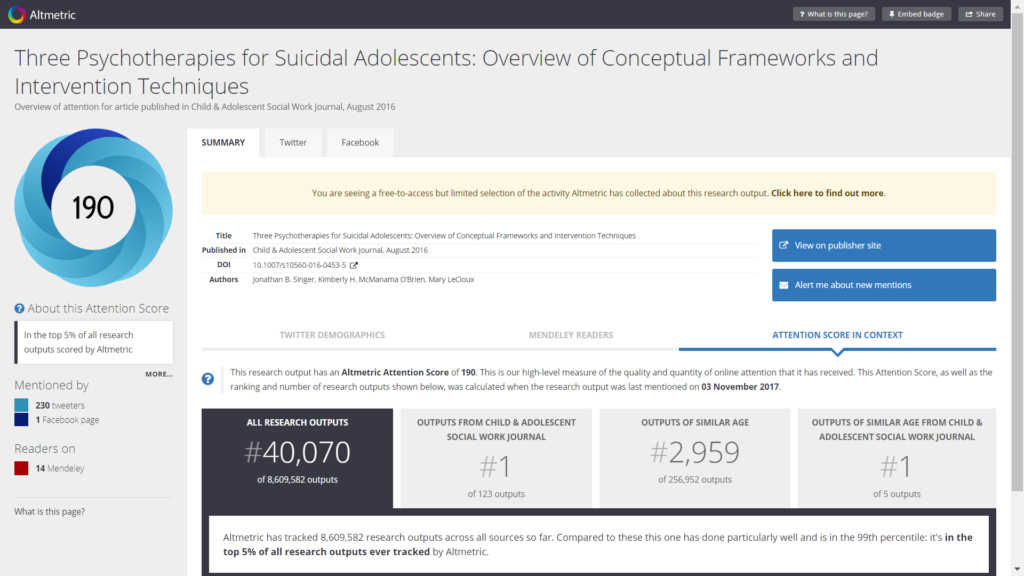Using Technology for Social Work Scholarship: Creating and Sharing your Work
This post was written and edited by Nancy J. Smyth, Melanie Sage, and myself as part of our collaboration on our forthcoming book, Teaching Social Work with Digital Technology, to be published by CSWE Press in 2018.
Social and digital technologies offer many tools and opportunities to create and disseminate scholarship in social work. For example, social work educators can use blogs, podcasts, videos, and infographics to create and share content for professional purposes. To see an example of how to use infographics, please see Harnessing Technology for Social Work Scholarship (Hitchcock & Sage, 2017). This blog post describes two social work academics are using social media to share their research with others.
Dr. Jimmy A. Young, an Assistant Professor of social work at California State University San Marcos, shares how he uses social media to disseminate his research:
Social media technologies offer exciting opportunities to disseminate scholarship with a broader audience and share your research with others. A few examples include using Twitter to share a quick highlight or quote with a direct link to the article, a blog post with a longer quote or summary and direct link to the article, or some sort of video message on YouTube or Snapchat that also shares a summary and direct link. Today’s social media users enjoy rich content and video is an engaging way to share articles with others. I have also been successful in using professional academic social networks such as ResearchGate or Academia.edu to host articles, post summaries and links, as well as to connect with others working in a similar area. The great thing about these websites is you can get some analytics that can be useful for demonstrating your scholarly impact. For example, I have open access articles on ResearchGate that have garnered thousands of views and many of these articles have found their way into other scholar’s work as citations. GoogleScholar is another great way to manage your academic profile online and keep track of your scholarship and citations. Remember that some publishers do not want their articles shared on these websites for copyright reasons, but more and more are beginning to allow academics to post pre-print copies and even full online print versions. ResearchGate has been very useful because they are establishing relationships with some publishers to ensure that your work is freely available to share with others. Also, remember that many publishers provide a number of free copies for authors to distribute, and these copies can be great to share on social networks and increase your citations, online presence, and maybe even make you famous. Perhaps just moderately famous. (J.A.Young, personal communication, November 3, 2017).
Dr. Jonathan B. Singer, an Associate professor of Social Work at Loyola University and the founder of The Social Work Podcast, describes how he used social media to measure scholarly impact:
How do you measure scholarly impact? Academic scholarship has long relied on a formula that counts citations. The more times you are cited, the more impact your work is having. Citation count and impact is great in theory, but the current model for establishing impact is controlled by a for-profit corporation (Thompson/Reuters) that excludes most social work journals. So, if you publish an important piece of scholarship in a journal without an impact factor score, many researchers in academia won’t take it seriously. “That’s ok,” you say, “I’m interested in reaching a wider audience than just researchers.” Most scholarship, however, is hidden from the general public behind a paywall. The issue of what qualifies as scholarship, and how institutions evaluate scholarly output and measure impact, takes on renewed importance with in the era of social media. The use of social media in scholarship has been called social scholarship (Greenhow & Gleason, 2014). Disseminating scholarship through blogs, podcasts, and other forms of social media makes content accessible to the general public and is therefore consistent with the Social Work values of social justice and service. But there is enormous pressure for social work scholars to publish in journals with high impact factors, and to not publish content in mediums that do not have Impact Factors, including many social work journals, blogs, podcasts, and other forms of social media.
What else can we do? In recent years, there have been alternative ways of measuring impact. H-Factor is a citation count formula that is not behind a proprietary paywall and can be easily accessed through Google Scholar. Almetric has become one of the most widely used services to measure the reach of peer-reviewed scholarship on social media. Altmetric looks at the number of times your scholarship has been tweeted, shared on Google Plus, and included in a Mendeley database. Although you have to pay to access the deep analysis, basic information about the reach of your articles on these social media sites is free. Academic social network sites, such as ResearchGate and Academia.edu encourage scholars to post their articles (pre-print or otherwise) so that other scholars can find them. Academia.edu cites an open access research article from 2016 that showed 69% increase in citations over five years for scholars who posted their work on Academia.edu (Niyazov et al., 2016).
Here’s how all of this plays out in real life. Over the course of a year, Kim O’Brien, Mary LeCloux and I wrote an article about psychotherapies for suicidal youth. In August 2016 Child & Adolescent Social Work Journal published the article online (Singer, O’Brien, & LeCloux, 2017). Since Child & Adolescent Social Work Journal is not listed in the Impact Factor journal list, I decided to run my own experiment on social media to see if posting about the article on a regular basis would increase reach as measured by Altmetric. I set up a daily tweet through the app If This Then That that said “Online access to Theory & Techniques for ABFT, DBT & I-CBT for #suicidal adolescents http://rdcu.be/ntfQ #SPSM #Socialwork #psychology”. So, what happened as a result of this daily tweet? The article quickly became the most tweeted article from the journal and in the Top 5% of all research articles tracked by Altmetric. At least one person per day (other than me) shared the article with their followers. See Figures 1 and 2.
Figure 1- Altmetric Score on March 4, 2017 by Jonathan B. Singer
When the publisher notified me that the article was being published in the physical journal I went to the journal website. I saw that the article had been shared 429 times and downloaded 262 times. There were 8 other articles in the issue. The second most widely downloaded article had 166 downloads and 0 shares.
Figure 2. Shares and Downloads on March 4, 2017 by Jonathan B. Singer
The reach of this article is due to Social Media. Again, the article reached a wide audience BEFORE the article was published in the physical journal because of social media. My experiment was a success. The article was published in the April issue of the Journal. I continued to share the article on Twitter. As shown in Figure 3, the Altmetric score continues to go up.
Figure 3 – Altmetric Score on November 3, 2017 by Jonathan B. Singer
I will continue to track the article to monitor the shares to download ratio and the citation count (which was at zero in March and currently at one). So, what about the paywall? Springer Publishing now offers an option where people cannot print or download the article, but can read the article online free with this link http://rdcu.be/ntfQ. I strongly encourage all academics to look to social media as a place to share scholarship. If you publish in peer-reviewed journal articles, ask them to provide an option similar Springer Publishing (J.B. Singer, personal communication, November 3, 2017).
References
Bornmann, L. (2015). Alternative metrics in scientometrics: a meta-analysis of research into three altmetrics. Scientometrics, 103(3), 1123–1144. https://doi.org/10.1007/s11192-015-1565-y
Hitchcock, L. I., & Sage, M. (2017, September 29). Harnessing Technology for Social Work Scholarship: #CSWResearch Day at Ohio State University [Blog post]. Retrieved from: https://laureliversonhitchcock.org/2017/10/02/harnessing-technology-for-social-work-scholarship-cswresearch-day-at-ohio-state-university/.
Niyazov, Y., Vogel, C., Price, R., Lund, B., Judd, D., Akil, A., … Shron, M. (2016). Open access meets discoverability: Citations to articles posted to Academia.edu. PLOS ONE, 11(2), e0148257. https://doi.org/10.1371/journal.pone.0148257
Singer, J. B., O’Brien, K. H. M., & LeCloux, M. (2017). Three psychotherapies for suicidal adolescents: Overview of conceptual frameworks and intervention techniques. Child and Adolescent Social Work Journal, 34(2), 95–106. https://doi.org/10.1007/s10560-016-0453-5
How to cite this blog post:
Hitchcock, L. I., Sage, M., & Smyth, N. J. (2017, November 8). Using Technology for Scholarship: Creating and Sharing your Work. [Blog post]. Retrieved from: https://laureliversonhitchcock.org/2017/11/08/using-technology-for-social-work-scholarship-creating-and-sharing-your-work/





